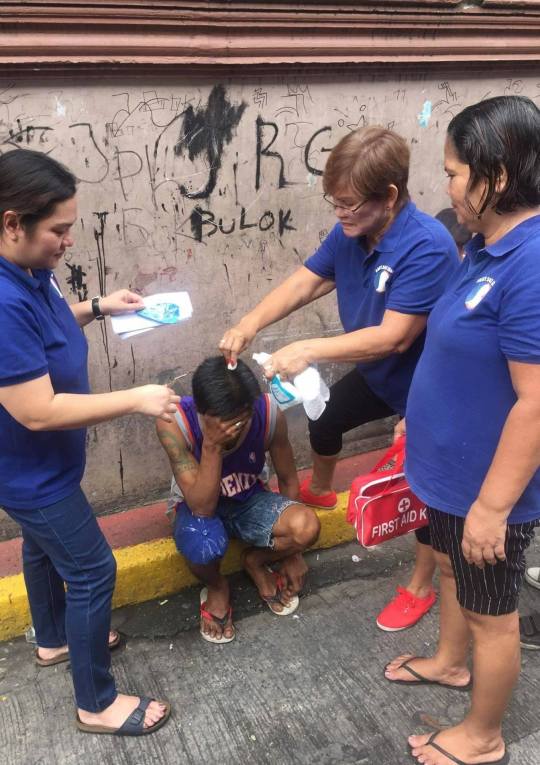A blog featuring an interview with a barangay official regarding Disaster Risk Reduction and Managament.
Don't wanna be here? Send us removal request.
Photo







Pictures from programs the barangay has organized (cleaning of drainages, first aid, giving of relief goods, etc)
0 notes
Text
Barangay Kuwentuhan and Community Walk
On the December 2nd, 2019, I and some of my friends went to the barangay hall of Barangay 542, which also happens to be the house of one of my friends, for an interview about disaster risk reduction and management as well as for a community walk. The person who we interviewed was my said friend’s aunt, Jenny Quintos, who was the current barangay chairman.
To start off the interview, we asked her about the state of disaster risk reduction in the barangay, including their vulnerabilities, risks, and capacities. She said that due to the slope of their street proximity to Espana, they tend to be flood prone. Aside from this, a lot of residences in the barangay are made out of light materials with weak foundations. Because of this, they are very prone to the easy spread of fire and the effects of typhoons and earthquakes are much worse. This is a problem because with every infrastructure that gets destroyed with each calamity, more and more money is being spent on rebuilding them and other equipment such as first aid kits, flashlights, food rations, and etc.
These instances are very common in the Philippines due to country being a currently developing country. Since a lot of the citizens on the Philippines belong below the poverty line, their residences are either made up of light materials, or they are non-existent. Besides this, our government often has lacking funds, resulting in less effective and less efficient solutions to problems caused by these calamities and disasters.
Putting the vulnerabilities and risks aside, the barangay also has its capabilities. For one, they have televisions, social media, MDRRMC text alerts, and radios for spreading news in case of upcoming calamities. In the events of small calamities, the barangay hall serves as the holding area. For big calamities, they have the Holy Trinity Parish. Aside from this, the barangay holds barangay-wide earthquake drills as well as inviting guest speakers twice a year. The barangay hall also has generators, 2-way radios, barangay patrol, medicine, first aid kits, and other materials in case of emergencies. They also follow the city ordinance, “tapat ko, linis ko” as one of the solutions for flooding. For problem specific solutions, the barangay organizes events for nutrition month (for children), livelihood programs for women and the poor, youth camps, and giving gifts to the elderly. The barangay council, PNP, firefighters and the people from city hall that are in charge of these preparations/preventions.
After the interview and barangay walk, I felt a drive to help improve not only that specific barangay, but our whole country. Disaster risk reduction and management should not be taken for granted because it is what helps us prevent casualties and chaos whenever a calamity/disaster hits us. If we can’t prevent it, we can at least lessen its effects.
For instance, we should improve our drainage systems to prevent flooding and instill discipline within the members of the community with proper waste management in order to prevent clogging these drainage systems. We should also invest in better quality equipment (generators, lamp posts, fire trucks, warning systems, etc) in order to be more effective and efficient. Another solution is educating the members of the community about the do’s and don’ts before, during, and after disasters (fires, earthquakes, typhoons, etc). This prepares the people for these events and help prevent more casualties.
And most importantly, we must remember that surviving these disasters does not solely rely on the work our barangay members. Surviving these disasters requires EVERYONE to comply, cooperate, and basically make efforts. As a UST NSTP student, I am more than excited to offer my service for the betterment of the community for the present and future generations to come.
1 note
·
View note









